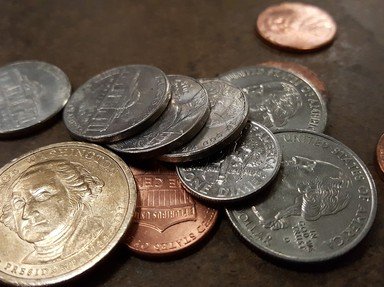Quiz Answer Key and Fun Facts
1. The 1893 Columbian Exposition held in Chicago, Illinois was funded in part by the 1892-93 Columbian Exposition Commemorative Half Dollar and the 1893 Columbian Exposition "Isabella" Commemorative Quarter. The first half dollar proof was sold for a substantial amount in 1893. What amount was paid for that coin?
2. The decade of the 2000s prominently featured the release of the U.S. State quarters. Each year featured five new quarters released in the order the states were admitted into the United States union. Of the states that are considered to be in the "Midwest", which state quarter was released last?
3. As you may know, the Denver mint began operation in 1906, and as you may know from your coin collection, all coins struck at the Denver mint bear the 'D' mint mark on them. In that first year of operation, the Denver mint struck dimes, quarters, half dollars, half eagle ($5.00) gold pieces, eagle ($10.00) gold pieces and the double-eagle ($20.00) gold pieces; but can you tell me the first commemorative coin that was struck at the Denver mint?
4. Missouri was admitted into the Union in 1821. The 1921 Missouri Centennial Half Dollar was released at the Centennial Exposition and State Fair to commemorate the anniversary. Which famous American(s) is/are featured on the coin?
5. The State Quarters were some of the most collected coins in many years. Each State was commemorated with a Quarter. The reverse of each coin visually related in various ways to the honored State. What items were found on the reverse of the Kansas Quarter?
6. The Missouri State Quarter has 3 dates unlike most of the other coins in the series. These dates are 1804, 2003, and 2004. What are the significance of these years?
7. Despite recent sentiment that the penny is obsolete, the U.S. Mint issued the 2010 penny with a redesigned reverse side. This design symbolizes President Lincoln's commitment to the preservation of the United States as a single united country. What is the name of the design on reverse side of the 2010 penny?
8. The America the Beautiful Quarter program starts in 2010. Five coins representing United States National Parks, Monuments and other sites of interest will be released each year for 14 years. Which Midwestern State will be honored first?
9. The 1991 Mount Rushmore Commemorative Half Dollar naturally has an image of the monument on the obverse. What animal is pictured on the reverse?
10. The American Buffalo (actually a bison, but you know what we mean) has strong ties to the Midwest. Millions of them used to roam the Great Plains states. The US Mint now coins American Buffalo gold coins in various denominations, both bullion and collector proof versions. What is the face value of the one troy ounce Gold American Buffalo coin?
Source: Author
JMElston
This quiz was reviewed by FunTrivia editor
WesleyCrusher before going online.
Any errors found in FunTrivia content are routinely corrected through our feedback system.

